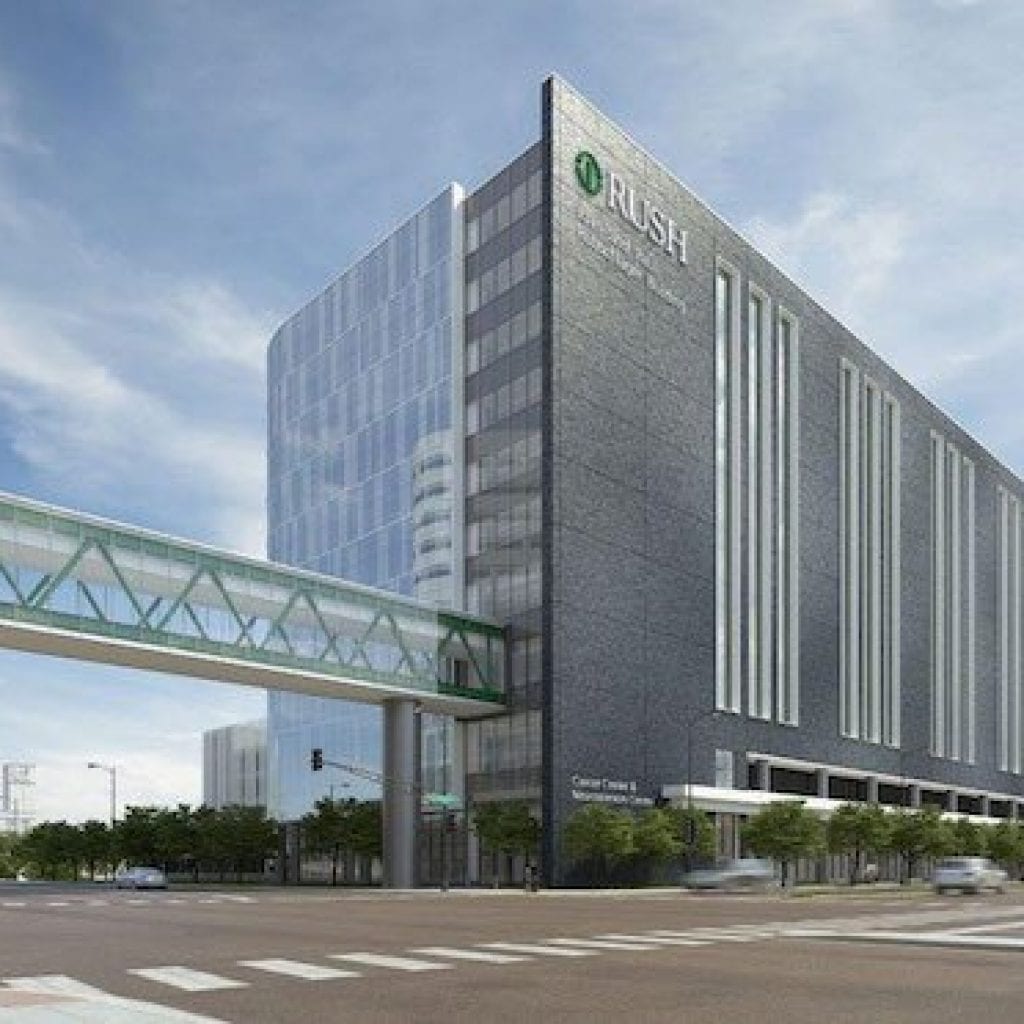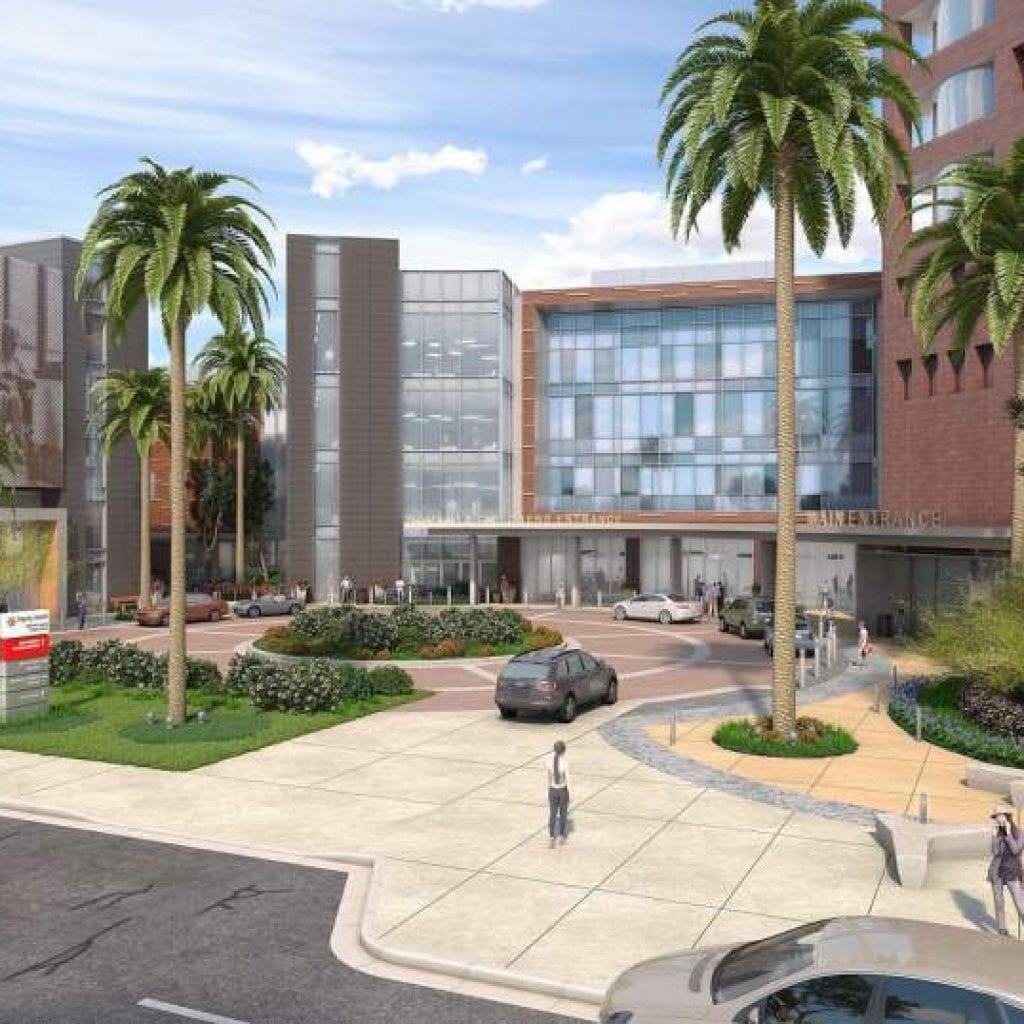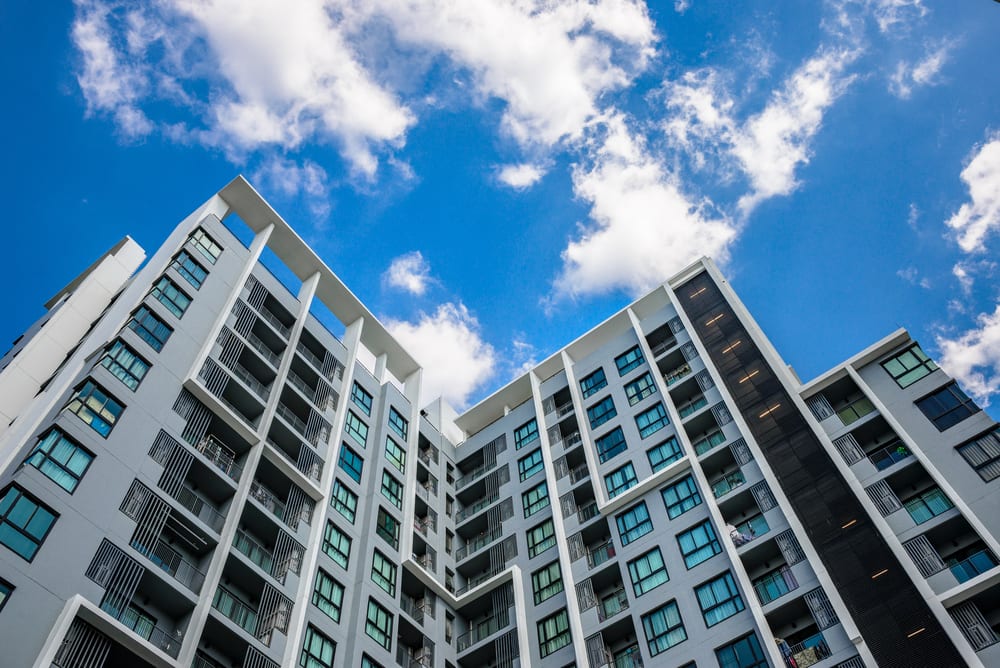
The Construction Trends to Watch in 2019 and Beyond
What are the future construction trends you should be monitoring?
In this piece we’ll review some of the top commercial construction trends to watch in medical, hotel and multifamily construction and what they could mean for you in the future.
We’ll also explore a sampling of the projects we’re tracking here at BuildCentral that exemplify these trends.
Healthcare Construction Trends

Aging boomers and shifts in healthcare delivery preferences should keep this sector busy even in challenging times.
In fact, in a 2018 survey by our friends at Medical Construction & Design magazine, 68% of the respondents in their 2018 Industry Pulse survey indicated growth.
Average project value increased for 66% of respondents and the overall square footage of projects increased for 54.5% of respondents with only 9.5% saying it was decreasing.
Their survey revealed outpatient facilities and medical office buildings (MOBs) leading the way with 59% of survey respondents indicating that these are the types of facilities they’ll be focusing more on in the near term.
-
49% of the respondents indicated more engagement in specialty clinics focused on specific ailments like heart, cancer, dialysis, behavioral health, etc.
-
33% indicated that emergency room construction was on the uptick.
-
31% indicated an increase in work on Senior Living/Nursing facilities
An interesting takeaway from the survey was that 40% of the respondents said that 51%-75% of their healthcare projects are renovations versus new buildings.
Vendors to this space should take these metrics and healthcare construction trends into account as they plan their sales and marketing outreach this year.
BuildCentral’s data also speaks to many of these trends.
Here are 3 of the 20 most-viewed medical construction projects from our MedicalConstructionData.com database.
The Rush University Medical Outpatient Tower in Chicago, Illinois.

Plans call for the demolition of existing structures for the construction of a new 480,000-square-foot outpatient facility for the Rush University Medical Center.
The development will consolidate outpatient facilities and include primary and specialty care, imaging space, interventional radiology, rehabilitative therapy services and the Rush Ambulatory Surgical Center.
The project will also include cancer care and neurosciences programs. Work is to also include a six-story parking garage with 1,200 parking spaces.
California Hospital Medical Center Emergency Department and Women’s Services Building in Los Angeles, California.

Plans call for the construction of a four-story 150,460 sq ft 345-bed tower addition and renovations.
Work is to include new space for the emergency department, a neonatal intensive care unit, medical and surgical beds, and antepartum, postpartum, labor and delivery space.
Work will also include, an eight-story exit stair for the existing Tibbits Building, a connector sky bridge, a new central utility plant and a six-story parking structure with 8,000 square feet of ground-floor retail.
Virginia Hospital Center Expansion in Arlington, Virginia.
Plans call for the expansion of the Virginia Hospital Center campus.
The expansion will involve the construction of a seven-story, 240,000-square-foot outpatient building atop an associated, 2,000-space parking structure.
Work is to include the build-out of 120,000 square feet of existing outpatient space to 101 hospital beds.
For new hospital construction projects visit MedicalConstructionData.com
MultiFamily Construction Insights

With a shortage of affordable housing juxtaposed with new shifts in preferences by boomers and millennials, expect some flux around multifamily construction for the near future.
Still, the US census reported a 3.2% increase in multifamily construction spending versus the same period in 2017. While some are concerned that skilled labor shortages and affordability factors like rising interest rates could adversely affect growth, other experts aren’t as worried as expected increases in wages could eventually offset increased interest rates and home costs in general.
What Do Boomers and Millennials Want
in an Apartment or Condo?
Those millennials looking to start families are seeking homes in the nearby suburbs where they can still enjoy a short commute, but with larger and cheaper housing options than could be found in the city proper.
From an article by Building & Construction Design, according to Daun St. Amand, SVP and Global Residential Sector Leader of design consultancy CallisonRTKL:
“The trend now is to identify suburban locations where we can design mixed-use projects that offer a bit of urbanism, including transit-oriented development and socialization opportunities.”
Daun St. Amand, SVP and Global Residential Sector Leader of design consultancy CallisonRTKL
Millennials on a budget that aren’t planning families are now also considering affordable urban housing via co-living alternatives that provide tenants communal living spaces, bathrooms and kitchens.
This keeps costs down but has the added advantage of easier social interaction, key for this demographic.
Boomers are often empty nesters looking to go minimal and shed the size and expense of their larger homes in the suburbs in exchange for the lifestyle advantages that come with urban living.
Many are also opting to rent instead as a hedge against market downturns or to stay liquid in retirement.
But, while many boomers are looking for something more minimal, others want a warm place to visit in the winters with plenty of space for entertaining.
They want single floor homes that are easy to get around in and they don’t want to do yard work.
And those with means and a healthy nest egg want it all, including top notch amenities. One such development speaks to that trend in spades.
Located in the Scottsdale area, the Ritz-Carlton Residences, Paradise Valley seeks to pair their strong brand with luxury living in a warm climate.
According to their website:
“The Residences will be part of an enclave that will have as its centerpiece a Ritz-Carlton hotel. Homeowners will enjoy an array of services and sophisticated comforts.”
Ritz-Carlton Residences, Paradise Valley
This project makes our list of top 20 most-viewed multifamily projects as do their counterparts in this hotel/residences niche. This is certainly one of many construction trends to watch closely this year.
- The Dream Hotel in Palm Springs, California
Plans call for a Dream Hotel that will have 169 rooms and 34 condominiums in a five-story, arc-shaped building. The development will include three swimming pools, underground parking for 230 cars, and 10,000 square feet of meeting space.
- Four Seasons Hotel & Private Residences in Ft. Lauderdale Florida.
Plans call for the construction of the new 23-story Four Seasons Hotel & Private Residences, Fort Lauderdale.
The project includes demolition of the former Avalon Waterfront Inns and Tropic Cay Hotel.
The new development will feature 130 hotel rooms and 90 luxury condos, with separate swimming pools and lobbies, a spa, fitness center, ballroom, meeting facility, and several restaurants.
Residencies will range from 800 to 6,000 square feet and one to three bedrooms.
MultiFamily Projects Designed to Appeal to Millennials
One developer we’ve been tracking is Starcity who seems to be making it a point to capitalize on the co-living “micro apartment” trend.
One project called Bassett is in San Jose, California and will be 18 stories with 800 units. Each floor will have its own common kitchen facility. Starcity is calling this the largest co-living project in the country.
Another, also by Starcity is called Minna and is located in San Francisco, California.
This project will have 270 units with shared bathrooms and kitchens.
Both San Francisco and San Jose have felt the pain of increased populations due to the tech boom, but with sky high real estate prices in the region, area millennials are looking into these more affordable options with open minds.
Track these projects and more in
our MultiFamily Construction database.
Hotel Construction Insights
When it comes to lodging, we will continue to see millennial tastes shape the future. And we’re seeing some spending growth in this sector.
According to October 2018 Census Data, year over year spending growth in the space is up 7.3%.
Ernst & Young details in a recent report that millennials are the primary customer segment for hoteliers looking to stay ahead of the curve.
And according to Marcus & Millichap’s 2018 Hospitality North American Investment Forecast we see millennials are expected to be the biggest spenders of any generation in the coming years.
Per the report, hotels are investing in food, beverage and amenities as this segment is expected to take 4 domestic trips a year, which should increase occupancy rates and revenue.
Vendors in the space would do well to recognize the shifting demands hoteliers are facing as they seek to woo this important demographic.
Increased competition from brands like Airbnb makes these considerations even more important. How is the market responding?
Enter Micro-Hotels. These hotels downsize their rooms, but the other amenities keep things hip, social and convenient — perfect for millennials.
Tru by Hilton in Savannah, Georgia is one such entity specifically catering to millennials. It’s expected 90 rooms should be open in February of 2019. A visit to the website exemplifies what we’ve been talking about: a focus on millennial tastes for communal socializing, close to walkable districts, myriad choices for breakfast and a 24 hour fitness center, so even the night owls can get buff when convenient.
Moxy South Beach by Marriott in Miami Beach, Florida. Plans call for partial demolition, renovation and restoration of three aging storefronts to make way for a new seven-story, 202-room boutique hotel catering to millennials. The property will include a 40-seat restaurant and 1,300 square feet of retail space on the ground floor, a pool deck and bar on the second floor.
All of these projects can be found in our HotelMarketData.com database.
Takeaways
2019 was a good year for those who understood and responded to the construction trends shaping the medical, multifamily and hospitality industry sectors.
We’re seeing tastes shift and for those who are nimble enough to capitalize on these trends, the immediate future seems rosy.
But it can be hard to stay on top of trends and new projects while still doing the hard work of closing the deal.
BuildCentral tracks and compiles thousands of projects and contacts you may not have known about otherwise.
Get up to 5 projects a day for 7 days when you sign up for a free trial.
Or, give us a call at 866-316-5300 for a free strategy session.
See for yourself how our data can deliver for you.
[vc_facebook type=”standard”]

